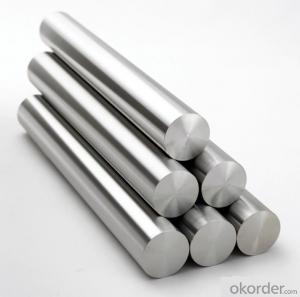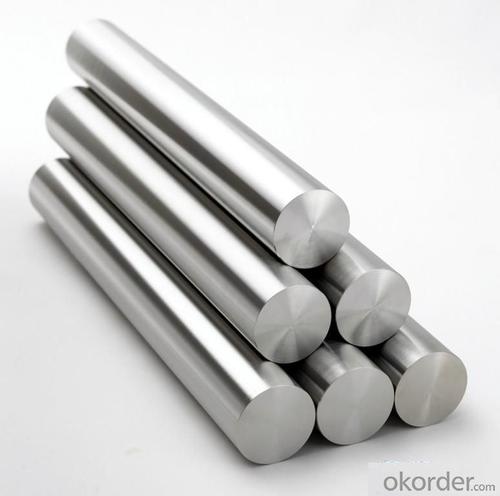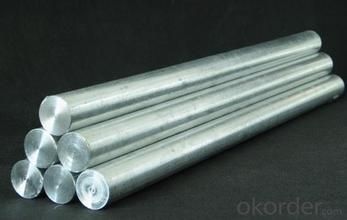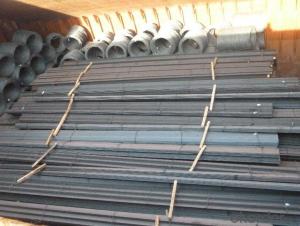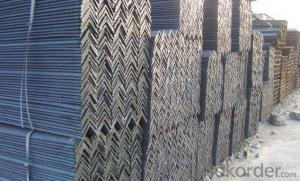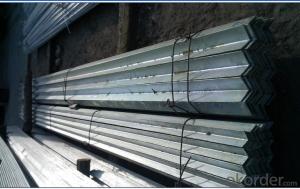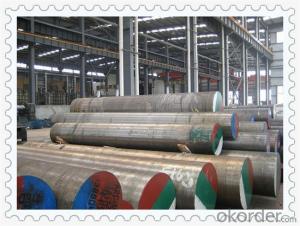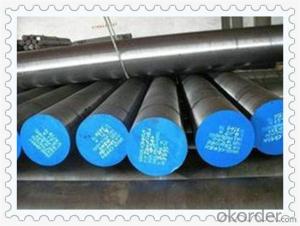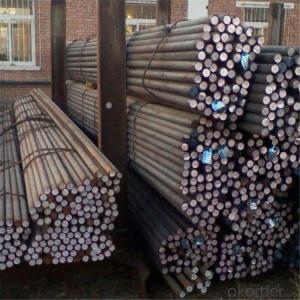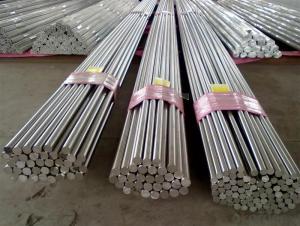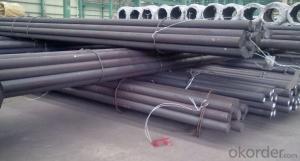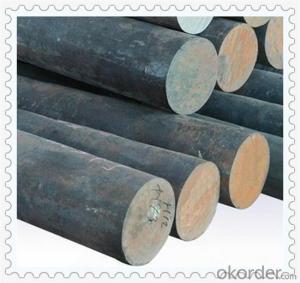SAE1045 Special Steel Round Bar
- Loading Port:
- China Main Port
- Payment Terms:
- TT or LC
- Min Order Qty:
- -
- Supply Capability:
- -
OKorder Service Pledge
OKorder Financial Service
You Might Also Like
Product Description:
OKorder is offering SAE1045 Special Steel Round Bar at great prices with worldwide shipping. Our supplier is a world-class manufacturer of steel, with our products utilized the world over. OKorder annually supplies products to European, North American and Asian markets. We provide quotations within 24 hours of receiving an inquiry and guarantee competitive prices.
Product Applications:
SAE1045 Special Steel Round Bar are ideal for structural applications and are widely used in the construction of buildings and bridges, and the manufacturing, petrochemical, and transportation industries.
Product Advantages:
OKorder's SAE1045 Special Steel Round Bar are durable, strong, and resist corrosion.
Main Product Features:
· Premium quality
· Prompt delivery & seaworthy packing (30 days after receiving deposit)
· Corrosion resistance
· Can be recycled and reused
· Mill test certification
· Professional Service
· Competitive pricing
Product Specifications:
Manufacture: Hot rolled
Grade: Q195 – 235
Certificates: ISO, SGS, BV, CIQ
Length: 6m – 12m, as per customer request
Packaging: Export packing, nude packing, bundled
Chinese Standard (H*W*T) | Weight (Kg/m) | 6m (pcs/ton) | Light I (H*W*T) | Weight (Kg/m) | 6m (pcs/ton) | Light II (H*W*T) | Weight (Kg/m) | 6M |
100*68*4.5 | 11.261 | 14.8 | 100*66*4.3 | 10.13 | 16.4 | 100*64*4 | 8.45 | 19.7 |
120*74*5.0 | 13.987 | 11.9 | 120*72*4.8 | 12.59 | 13.2 | 120*70*4.5 | 10.49 | 15.8 |
140*80*5.5 | 16.89 | 9.8 | 140*78*5.3 | 15.2 | 10.9 | 140*76*5 | 12.67 | 13.1 |
160*88*6 | 20.513 | 8.1 | 160*86*5.8 | 18.46 | 9 | 160*84*5.5 | 15.38 | 10.8 |
180*94*6.5 | 24.143 | 6.9 | 180*92*6.3 | 21.73 | 7.6 | 180*90*6 | 18.11 | 9.2 |
200*100*7 | 27.929 | 5.9 | 200*98*6.8 | 25.14 | 6.6 | 200*96*6.5 | 20.95 | 7.9 |
220*110*7.5 | 33.07 | 5 | 220*108*7.3 | 29.76 | 5.6 | 220*106*7 | 24.8 | 6.7 |
250*116*8 | 38.105 | 4.3 | 250*114*7.8 | 34.29 | 4.8 | 250*112*7.5 | 28.58 | 5.8 |
280*122*8.5 | 43.492 | 3.8 | 280*120*8.2 | 39.14 | 4.2 | 280*120*8 | 36.97 | 4.5 |
300*126*9 | 48.084 | 3.4 | 300*124*9.2 | 43.28 | 3.8 | 300*124*8.5 | 40.87 | 4 |
320*130*9.5 | 52.717 | 3.1 | 320*127*9.2 | 48.5 | 3.4 | |||
360*136*10 | 60.037 | 2.7 | 360*132*9.5 | 55.23 | 3 |
FAQ:
Q1: Why buy Materials & Equipment from OKorder.com?
A1: All products offered byOKorder.com are carefully selected from China's most reliable manufacturing enterprises. Through its ISO certifications, OKorder.com adheres to the highest standards and a commitment to supply chain safety and customer satisfaction.
Q2: How do we guarantee the quality of our products?
A2: We have established an advanced quality management system which conducts strict quality tests at every step, from raw materials to the final product. At the same time, we provide extensive follow-up service assurances as required.
Q3: How soon can we receive the product after purchase?
A3: Within three days of placing an order, we will begin production. The specific shipping date is dependent upon international and government factors, but is typically 7 to 10 workdays.
Q4: What makes stainless steel stainless?
A4: Stainless steel must contain at least 10.5 % chromium. It is this element that reacts with the oxygen in the air to form a complex chrome-oxide surface layer that is invisible but strong enough to prevent further oxygen from "staining" (rusting) the surface. Higher levels of chromium and the addition of other alloying elements such as nickel and molybdenum enhance this surface layer and improve the corrosion resistance of the stainless material.
Q5: Can stainless steel rust?
A5: Stainless does not "rust" as you think of regular steel rusting with a red oxide on the surface that flakes off. If you see red rust it is probably due to some iron particles that have contaminated the surface of the stainless steel and it is these iron particles that are rusting. Look at the source of the rusting and see if you can remove it from the surface.
Images:
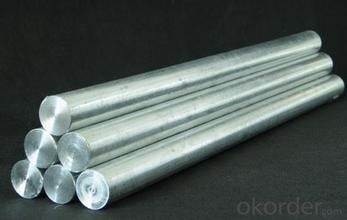

- Q: Can steel angles be used in the construction of parking garages?
- Yes, steel angles can be used in the construction of parking garages. Steel angles are commonly used as structural components in various construction applications, including parking garages. They provide strength, stability, and support for the overall structure and can be used for framing, bracing, and reinforcing. Steel angles are versatile and can be easily customized to meet the specific design requirements of parking garage construction.
- Q: What is the typical ductility of steel angles?
- The typical ductility of steel angles can vary depending on the specific grade and composition of the steel. However, in general, steel angles have good ductility due to the inherent properties of steel, which allows them to be easily bent or deformed without breaking.
- Q: Can steel angles be used for manufacturing staircases?
- Yes, steel angles can be used for manufacturing staircases. Steel angles are commonly used as structural components in staircase construction due to their strength, durability, and versatility. They provide stability and support to the staircase framework and are often used as stringers or supports for the steps. Additionally, steel angles can be easily welded or bolted together to create a sturdy and reliable staircase structure.
- Q: Can steel angles be used in seismic or earthquake-resistant construction?
- Yes, steel angles can be used in seismic or earthquake-resistant construction. Steel angles are commonly used in structural applications as they provide strength and stability to a structure. In seismic or earthquake-resistant construction, the primary goal is to design and construct buildings that can withstand the forces generated by an earthquake. Steel angles can be utilized in various ways to enhance the seismic resistance of a structure. One common application is to use steel angles as bracing elements. Bracing systems are employed to help distribute the seismic forces throughout the structure, reducing the possibility of collapse. Steel angles can be used as diagonal bracing members, providing additional strength and stiffness to the building. Additionally, steel angles can be used as moment-resisting frames in seismic design. Moment-resisting frames are designed to dissipate and absorb the energy generated during an earthquake. By incorporating steel angles into the frame, the structure can effectively resist the lateral forces and remain stable during seismic events. Moreover, steel angles can be employed in the construction of steel moment frames, which are widely used in seismic design. These frames consist of steel columns and beams connected by steel angles or other connections capable of resisting the forces induced by an earthquake. Steel angles play a crucial role in transferring forces between the different members of the frame, ensuring the overall stability and integrity of the structure. In conclusion, steel angles can be effectively utilized in seismic or earthquake-resistant construction. Their strong and versatile nature makes them suitable for bracing systems, moment-resisting frames, and steel moment frames, all of which contribute to enhancing the seismic resistance of a structure. However, it is crucial to ensure that the design and installation of steel angles comply with the relevant building codes and regulations to guarantee the safety and durability of the construction.
- Q: How are steel angles protected against corrosion?
- Steel angles are protected against corrosion through various methods such as galvanization, painting, or applying a protective coating. These protective measures create a barrier between the steel surface and corrosive elements, preventing direct contact and ensuring the longevity and durability of the steel angles.
- Q: What are the common uses of equal steel angles?
- Equal steel angles, known for their versatility and wide usage in various industries, serve as a crucial structural component. They find application in different sectors, including but not limited to: 1. Construction: In construction projects, equal steel angles are extensively employed for framing, support, and bracing structures. They are commonly used in the assembly of buildings, bridges, and other infrastructure developments. 2. Manufacturing: Equal steel angles hold immense significance in manufacturing industries such as automotive, machinery, and shipbuilding. They are utilized in the fabrication of frames, chassis, supports, and various other structural components. 3. Shelving and Racking: The construction of shelving and racking systems often incorporates equal steel angles. These angles provide the necessary strength and stability to bear heavy loads, making them a popular choice in warehouses, retail stores, and industrial facilities. 4. Fencing and Security: Equal steel angles are frequently employed in the construction of fences and gates, creating a robust and durable framework. This ensures property security, demarcation of boundaries, and protection of valuable assets. 5. Stairs and Handrails: Equal steel angles are commonly found in the construction of stairs and handrails, providing essential support and stability for safe and convenient access to different levels in buildings, walkways, and outdoor structures. 6. Infrastructure and Utilities: Equal steel angles play a vital role in various infrastructure and utility projects, including electrical transmission towers, telecommunication masts, and solar panel installations. These angles offer the necessary support and stability required for such structures. 7. Agricultural and Farming: The agricultural and farming industry greatly relies on equal steel angles for constructing fences, gates, and animal enclosures. These angles provide a secure and durable framework for containing livestock and safeguarding crops. 8. Decorative and Architectural: Equal steel angles are also utilized for decorative and architectural purposes, allowing for the creation of unique and visually appealing designs in buildings, furniture, and other decorative applications. In conclusion, equal steel angles find wide-ranging applications across various industries due to their strength, versatility, and cost-effectiveness. Whether it is for construction, manufacturing, infrastructure, or decorative purposes, equal steel angles play a vital role in providing structural support and stability.
- Q: Are steel angles suitable for historical restoration projects?
- Yes, steel angles can be suitable for historical restoration projects. Steel angles are versatile and durable, making them an excellent choice for structural support and reinforcement in historic buildings. They can be used to restore or replicate original architectural features, such as window frames, ornamental railings, and decorative elements. Additionally, steel angles can be fabricated to match the original design and provide a seamless integration with the existing structure. However, it is important to consider the specific requirements and regulations of the historical restoration project, as some preservation authorities may have restrictions on the use of modern materials. Consulting with experts in historical restoration and obtaining necessary approvals will ensure that steel angles are used appropriately and effectively in preserving the historical integrity of the building.
- Q: What are steel angles used for?
- Steel angles find frequent application within the construction and manufacturing sectors, serving a multitude of purposes. Structurally, steel angles serve as pivotal components. They are regularly employed as supports, braces, and reinforcements in the development of buildings, bridges, and other infrastructure endeavors. The angular shape of these steel components contributes to enhanced strength and stability, rendering them an optimal choice for the construction of load-bearing structures. The manufacturing industry also heavily relies on steel angles for the fabrication of diverse products. These angles can undergo welding, drilling, and cutting processes, allowing for the creation of bespoke shapes and structures. Commonly utilized as frames, brackets, and supports for machinery, equipment, and vehicles, steel angles aid in ensuring the stability and durability of these industrial assets. Furthermore, steel angles prove indispensable in the production of furniture, shelves, racks, and other storage solutions. Their robust construction endows them with the capability to support substantial loads, making them an ideal choice for applications in warehouses, garages, and factories. In conclusion, steel angles exhibit remarkable versatility and enjoy extensive usage in the realms of construction and manufacturing due to their inherent strength, stability, and adaptability. Whether it be supporting structures or fabricating products, these angles play a pivotal role in a myriad of applications.
- Q: Can steel angles be used for underground or subterranean structures?
- Yes, steel angles can be used for underground or subterranean structures. Steel angles provide excellent structural support and can withstand the high pressure and load-bearing requirements typically associated with underground or subterranean construction. They offer durability, strength, and flexibility, making them suitable for various applications in such environments.
Send your message to us
SAE1045 Special Steel Round Bar
- Loading Port:
- China Main Port
- Payment Terms:
- TT or LC
- Min Order Qty:
- -
- Supply Capability:
- -
OKorder Service Pledge
OKorder Financial Service
Similar products
Hot products
Hot Searches
Related keywords
